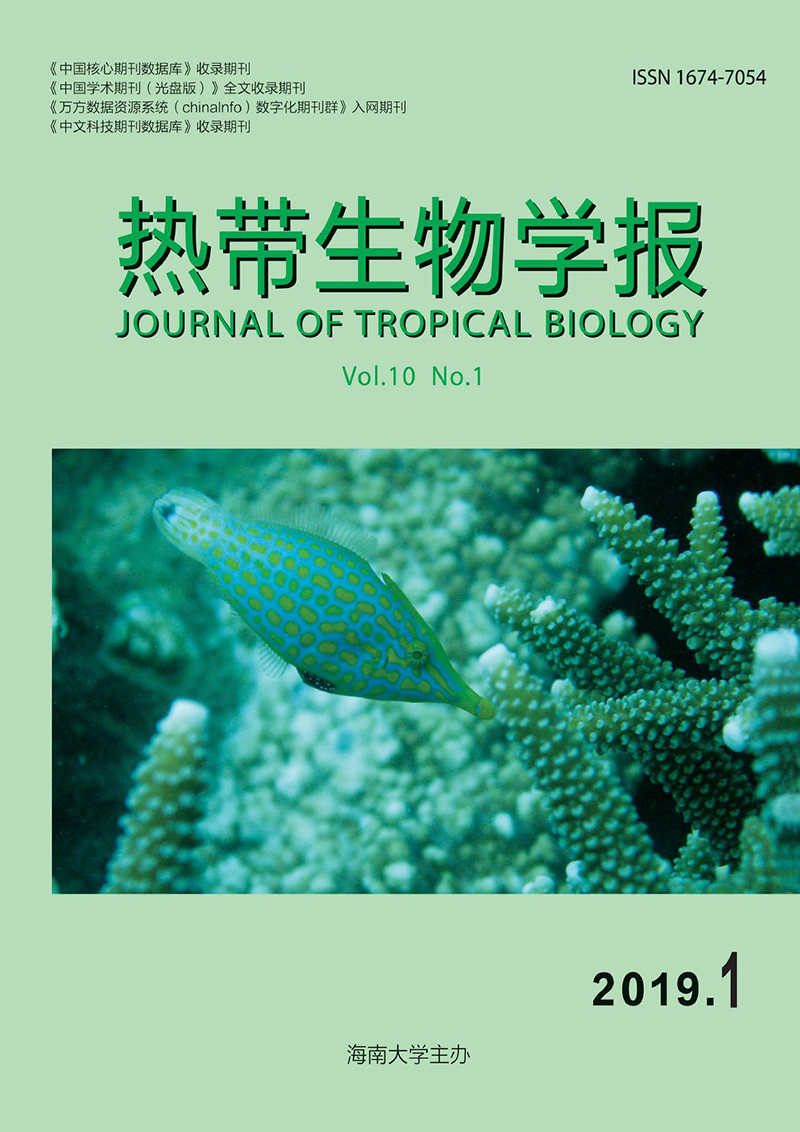|
[1]
|
邓旭, 梁彩柳, 尹志炜, 等.海洋环境重金属污染生物修复研究进展[J].海洋环境科学, 2015, 34 (6):954-960. |
|
[2]
|
CHEUNG K C, POON B H, LAN C Y, et al.Assessment of metal and nutrient concentrations in river water and sediment collected from the cities in the Pearl River Delta, South China[J].Chemosphere, 2003, 52 (9):1431-1440. |
|
[3]
|
YAP C K, ISMAIL A, TAN S G.Heavy metal (Cd, Cu, Pb and Zn) concentrations in the green-lipped mussel Perna viridis (Linnaeus) collected from some wild and aquacultural sites in the west coast of Peninsular Malaysia[J].Food Chemistry, 2004, 84 (4):569-575. |
|
[4]
|
AUDRY S, SCHÄFER J, BLANC G, et al.Fifty-year sedimentary record of heavy metal pollution (Cd, Zn, Cu, Pb) in the Lot River Reservoirs (France) [J].Environmental Pollution, 2004, 132 (3):413-426. |
|
[5]
|
王如才, 王昭萍, 张建中.海水贝类养殖学[M].青岛:海洋大学出版社, 1993. |
|
[6]
|
赵鹏, 张荣灿, 覃仙玲, 等.北部湾钦州港近江牡蛎重金属污染分析[J].水产学报, 2017, 41 (5):806-815. |
|
[7]
|
付文超, 孟范平, 王志峰, 等.北部湾潮间带沉积物和双壳类动物中的重金属, 污梁特征与生物积累[J].环境科学学报, 2013, 33 (5):1401-1409. |
|
[8]
|
HUANG H, WU J Y, WU J H.Heavy metal monitoring using bivalved shellfish from Zhejiang Coastal Waters, East China Sea[J].Environmental Monitoring & Assessment, 2007, 129 (1/2/3):315-320. |
|
[9]
|
方玲, 马海霞, 李来好, 等.华南地区近江牡蛎营养成分分析及评价[J].食品工业科技, 2018 (2):301-307. |
|
[10]
|
李晓梅, 郭体环, 张来军, 等.海洋酸化背景下铅胁迫对近江牡蛎溶菌酶活性的影响[J].江苏农业科学, 2016, 44 (12):297-299. |
|
[11]
|
马建新, 张宜奎, 宋秀凯, 等.重金属胁迫对海洋贝类毒性研究进展[J].海洋湖沼通报, 2011 (2):35-42. |
|
[12]
|
宁军号, 白伟, 宋坚, 等.4种重金属离子对偏顶蛤的急性毒性效应[J].大连海洋大学学报, 2016, 31 (3):290-294. |
|
[13]
|
常元勋, 赵超英.金属毒理学[M].北京:北京大学医学出版社, 2008:97-99. |
|
[14]
|
霍礼辉.泥蚶对重金属 (铜、铅、镉) 的富集和响应初步研究[D].宁波:宁波大学, 2012. |
|
[15]
|
葛奇伟, 徐永健, 葛君远.象山港养殖区缢蛏和泥蚶的Cu、Cd、Pb含量及其健康风险评价[J].环境科学学报, 2012, 32 (8):2042-2048. |
|
[16]
|
|
|
[17]
|
DE SOUZA R V, GARBOSSA L H, CAMPOS C J, et al.Metals and pesticides in commercial bivalve mollusc production areas in the North and South Bays, Santa Catarina (Brazil) [J].Marine Pollution Bulletin, 2016, 105 (1):377-384. |
|
[18]
|
姜元欣, 王伟涛, 陈德慰, 等.广西北部湾水域贝类重金属污染分析与南宁市民贝类食用风险分析[J].食品工业科技, 2013, 34 (8):52-55. |
|
[19]
|
姚茹, 黎小正.广西沿海主要贝类养殖区海水、表层沉积物及近江牡蛎体内重金属镉监测与评价[J].江苏农业科学, 2014, 42 (1):316-318. |
|
[20]
|
杜克梅.海南省近岸海域主要经济贝类重金属污染调查与评价[D].广州:暨南大学, 2013. |
|
[21]
|
中华人民共和国国家质量监督检验检疫总局.GB17378-2007 海洋监测规范[S].北京:中国标准出版社, 2008. |
|
[22]
|
中华人民共和国国家质量监督检验检疫总局, 中国国家标准化管理委员会.GB18668.4-2002海洋沉积物质量标准[S].北京:中国标准化出版社, 2002. |
|
[23]
|
史博.福建牡蛎 (Crassostrea angulata) 铜富集相关基因的研究[D].厦门:厦门大学, 2015. |
|
[24]
|
翁焕新.重金属在牡蛎 (Crassostrea virginica) 中的生物积累及其影响因素的研究[J].环境科学学报, 1996, 16 (1):51-58. |
|
[25]
|
LEHTONEN K K, LEINIÖ S.Effects of exposure to copper and malathion on metallothionein levels and acetylcholinesterase activity of the mussel Mytilus edulis and the clam Macoma balthica from the northern Baltic Sea[J].Bulletin of Environmental Contamination & Toxicology, 2003, 71 (3):489-496. |
|
[26]
|
孙元芹, 孙福新, 王颖, 等.太平洋牡蛎对铜的生物富集动力学特性研究[J].渔业现代化, 2014, 41 (2):32-37. |
|
[27]
|
张聪, 陈聚法, 马绍赛, 等.褶牡蛎对水体中重金属铜和镉的富集动力学特性[J].渔业科学进展, 2012, 33 (5):64-72. |
|
[28]
|
张少娜, 孙耀, 宋云利, 等.紫贻贝 (Mytilus edulis) 对4种重金属的生物富集动力学特性研究[J].海洋与湖沼, 2004, 35 (5):438-445. |
|
[29]
|
王晓丽, 孙耀, 张少娜, 等.牡蛎对重金属生物富集动力学特性研究[J].生态学报, 2004, 24 (5):1086-1090. |
|
[30]
|
宋德宏, 丁永生, 程远杰.近岸海域贝壳与海水重金属含量的相关性研究[J].现代生物医学进展, 2007, 7 (2):192-195. |
|
[31]
|
WILT F H.Biomineralization of the spicules of sea urchin embryos[J].Zoological Science, 2002, 19 (3):253. |
|
[32]
|
ZHANG G F, FANG X D, Guo X M, et al.The oyster genome reveals stress adaptation and complexity of shell formation[J].Nature, 2012, 490:49-54. |
|
[33]
|
赖增隆, 方展强.利用牡蛎壳体作为近海重金属污染标记物的研究[J].安徽农业科学, 2015 (15):196-198. |






 DownLoad:
DownLoad: